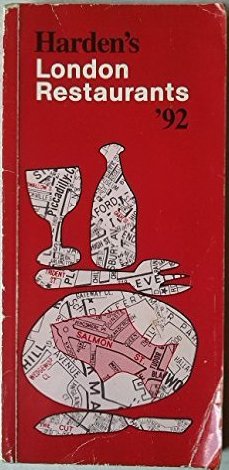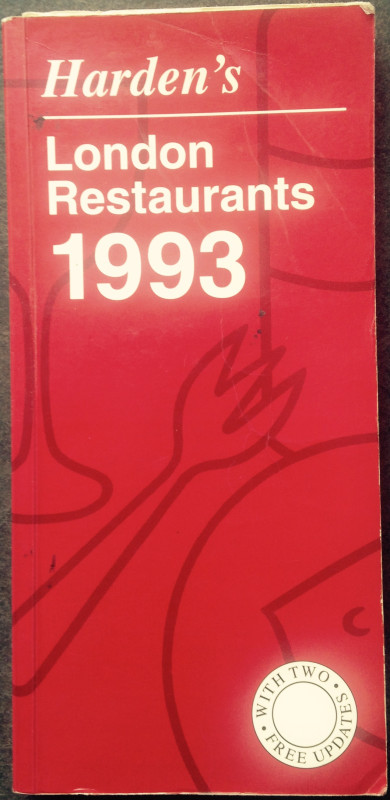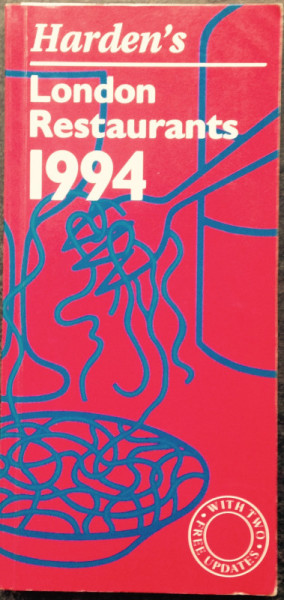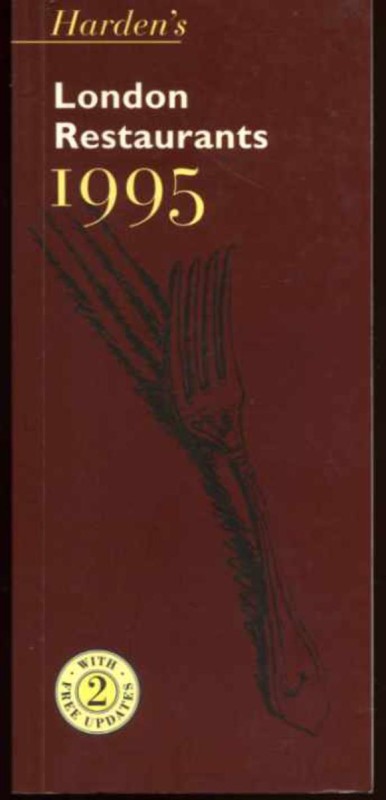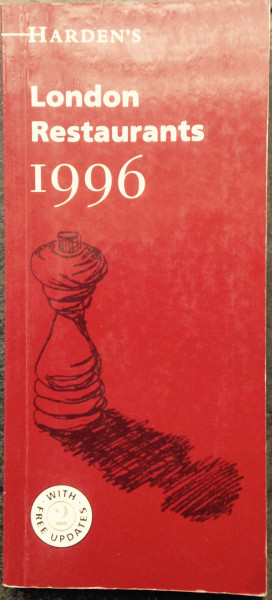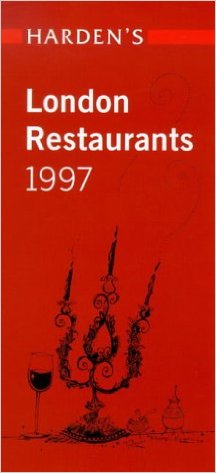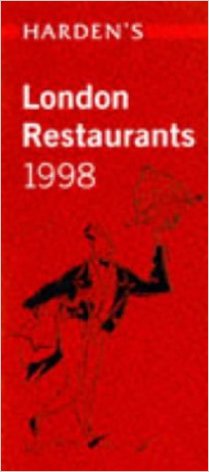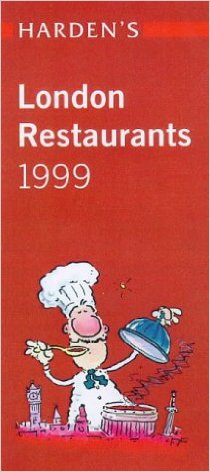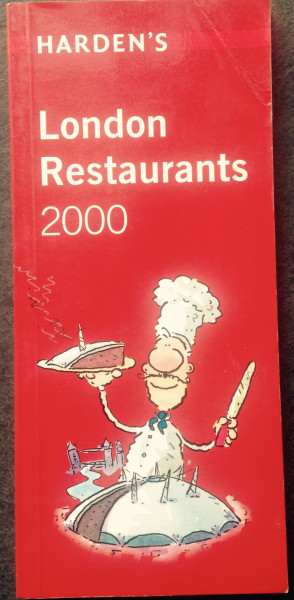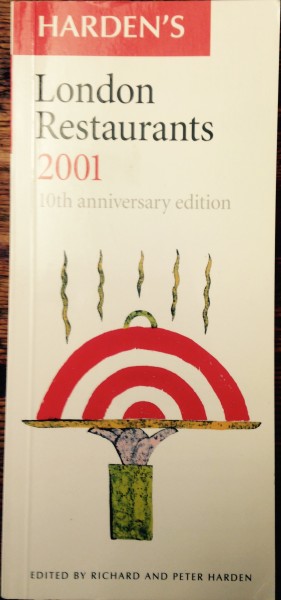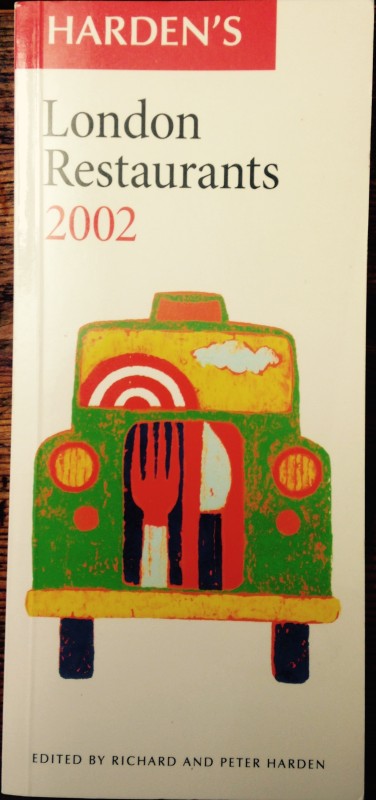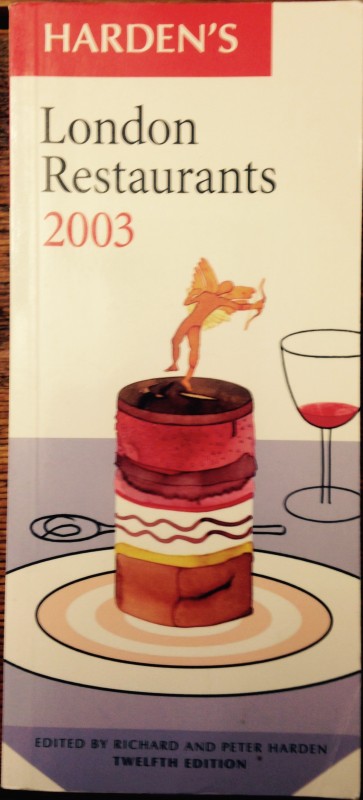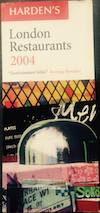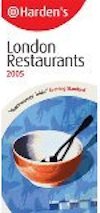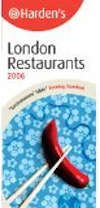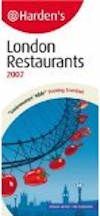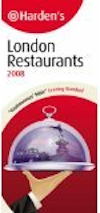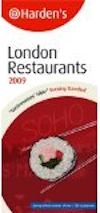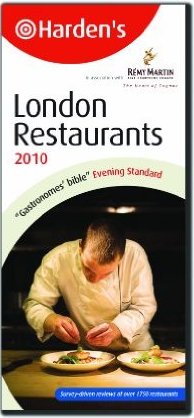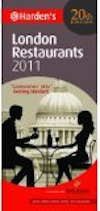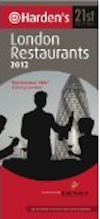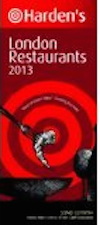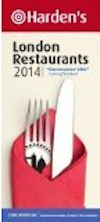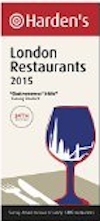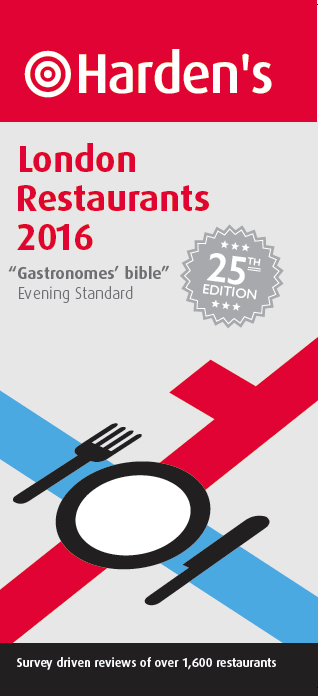The 2016 edition of Harden’s London Restaurants includes a four-page retrospective of the drivers that have re-shaped the restaurant industry in the 25 years since the guide’s inception in 1991.
Over the quarter-century, Harden’s has catalogued London’s emergence from the shadows cast by Paris and New York to become a contender as the world’s most vibrant culinary melting pot. The annual survey that drives Harden’s reviews has charted the most famous celebrity chefs’ rise to stardom, warned of their fall from grace, and even inspired the odd war-of-words (usually of the adult variety) with celebrity chefs and industry movers-and-shakers.
Join us as we take a look back through some Harden’s highlights from the last 25 years, and don’t forget to buy the 2016 London guide – out now!
In recent years, as guides such as Time Out and Zagat have abandoned their print editions, Harden’s now remains the leading guide dedicated solely to London Restaurants still widely sold in bookshops (the only other contender is the London edition of Michelin’s Hotel & Restaurant guide, with fewer than 50% of the reviews in Harden’s, and focused solely on relatively expensive establishments).
As the use of user-generated content has become ubiquitous in judging restaurants, the spotlight has fallen on the newer digital brands such as TripAdvisor. Unlike TripAdvisor, whose methodology is currently under attack as part of an ongoing Twitter campaign, Harden’s has never published its surveyees’ raw reports online, to prevent ballotstuffing. Having no access to raw user reviews makes it much harder to “game” the Harden’s system, because it is impossible to gauge how much false data to submit to do so. What’s more, Harden’s longstanding core of reviewers – some of who have been participating for over 20 years – provides a control group by which to access reports from newer respondents.
Throughout its 25 years its aim, led by feedback from ordinary diners, has been simple: To tell it like it is.

How times have changed: Michel Roux Senior in the kitchens at Le Gavroche in 1992 (middle). Today, Michel Roux Jr (right) runs the show.
Key moments in Harden’s history (date relates to edition of guide).
- (1992) Harden’s launches based on a survey of 110 friends and family. Independent restaurant critic, Emily Green, advises: “Don’t give up the day job” – a first taste of the warmth many rival critics would subsequently extend to the guide.
- (1992) Harden’s was the first restaurant guide to point out that Alistair Little (the celebrity chef of the moment) had rather gone off the boil.
- (1994) Harden’s draws the ire of the then chef-du-jour Nico Ladenis after a visit to Chez Nico, which led to eviction from the restaurant. It was later followed up with an abusive fax, in which Ladenis colourfully described the guides founders Richard and Peter Harden as “dwarves” and “c**ts”.
- (1996) Harden’s was the first restaurant guide to say that Gordon Ramsay was the best chef in London when he emerged onto the scene at Aubergine.
- (1999) Harden’s features of page 3 of The Times and The Telegraph, with its conclusion that Sir Terence Conran’s restaurant empire is over-rated. Sir Terence accuses the guide of using ‘purple prose’ to gain publicity.
- (1999) Harden’s launches national UK companion edition to London guide.
- (2002) Harden’s controversially reports terrible survey feedback on Jamie Oliver’s Fifteen, in stark contrast to the hagiographic reviews it was then accustomed to receiving in the media.
- (2005) Chez Bruce replaces The Ivy as Londoners’ favourite restaurant (a position it still holds to this day).
- (2008) Harden’s was also the first restaurant guide to point out that Gordon Ramsay was no longer the best chef in London – a conclusion disparaged at the time by Jay Rayner and many other critics.
- (2010) Harden’s, in conjunction with the Sunday Times and Rémy Martin, is the first to award and accolade to chef Brett Graham for his outstanding cooking at the now Michelin-starred up Ledbury.
- (2011) Harden’s, in conjunction with the the Sunday Times, launches its Top-100 listing of UK restaurants, which has grown over the years to three weekly pull-out supplements.
- (2015) Announcement of a return to boom conditions in the London restaurant scene. A trend which is continued in this year’s guide.

Double take: The Ivy’s trademark stained glass windows were a feature of the restaurant when we launched our first guide in 1992 (left) and today in 2015 (right) after a recent refurb’.
25 Years – What’s changed?
Most industries change a fair amount in 25 years, and pundits talk up the “step changes” they observe. But even the most ardent cynic would agree that the restaurant industry today has risen to new heights in the last quarter-century. In the early ’90s, the joke went that in heaven, the lovers were Italian, the chefs French, the mechanics German, and the police British. In hell, the police were Italian, the mechanics French, the lovers German, and guess which nationality the chefs were…
Twenty five years ago:
- It was taken as read that the UK was in the culinary Dark Ages, especially by visiting Americans.
- The idea that our TV chefs would be household names in France and the US would have been hilarious.
- The experience of half-decent food in a pub was a rarity, and pretty disgusting fare the norm.
- An interest in eating out, food and wine was seen as middle-aged and fuddy-duddy.
- MasterChef (first episode July 2, 1990) was scarcely a year old, and the idea that kids would take interest in Junior MasterChef would have seemed pie-in-the-sky. So what changed?
The new rock ’n’ roll
When we started our guide in 1991, one of the biggest objections to a new title from bookshop buyers was that eating out was too highbrow (“only for posh bastards”). The chef oft-cited with changing all that, Marco Pierre White, featured in our first guide as head chef at Harvey’s in Wandsworth. His cookbook,White Heat, had just been published, and – on its re-release this year to celebrate its 25th anniversary – was described in a recent Caterer & Hotelkeeper as “the book that showed, warts and all, that the kitchen was a cool place to be”.
It was MPW’s PR man of that time,Alan Crompton-Batt, who is sometimes credited with having observed that cooking was “the new rock ’n’ roll”. Perhaps he should have known, as he was an ex-music-promoter himself (for the late ’70s band,The Pyschedelic Furs).With another of his clients, Nico Ladenis (then with three Michelin stars) the cultivation of the ‘bad boy’ chef had begun (although we had to wait a few more years for all the effing).
The launch of other new restaurants, however, played just as significant a role in popularising the idea that eating out is for all. In early 1993, Sir Terence Conran moved into restaurants bringing all the money and expertise he’d acquired in running his huge retail empire, Storehouse plc.
With the opening of Quaglino’s, with its Q-shaped ashtrays and cigarette girl (now there’s something else you wouldn’t see nowadays) Sir Tel spun a compelling narrative of bringing the fraternité of Parisian brasseries to London. More-or-less simultaneously, Planet Hollywood launched scarcely five minutes’ walk away, with Arnold Schwarzenegger, Sylvester Stallone and Bruce Willis at the opening.The two debuts in short succession channelled a previously unknown amount of professionalism, capital and hype to catalyse a major shift towards democratising the idea of eating out, particularly in the London media.
Chefs trade ‘the stainless steel box’ for TV
By the late ’90s, the Harden’s office started to field fairly regular calls from TV production companies. It wasn’t us they wanted to make famous, unfortunately.The question they wanted answered: “Do you know
any chefs who you think would make good TV? To be honest it doesn’t really matter if they can cook – what we need is a big personality: somebody who looks good on camera.”
With Gordon Ramsay, the first London restaurant chef to become a global TV personality, the producers sure got that (and also someone who could cook).The rise of the Ramsay phenomenon globally was a terrific emblem of the newly discovered, insatiable desire for food-led programming. All the glamour transformed middle-class attitudes to the kitchen.Tom Jaine, editor of the Good Food Guide 25 years ago, commented in a November 2014 interview for Radio 4’s Food Programme that, in those days “respectable was owning not doing.” He went on to draw the contrast with today, where many recipients of an expensive education from the country’s top schools are drawn to a vocational path that a generation ago was on no-one’s radar.

Then and now: How Daphne’s in Chelsea (once a fave hangout of Princess Diana) has changed over the years. 1992 (left) and 2015 (right).
A proper food culture
Hand-in-hand with a growing interest in chefs has come a growing interest in, and respect for, ingredients and cooking The now-ubiquitous (then largely unknown) interest in local sourcing is part of a much foodier interest in food, that has helped spawn many more creative eating formats.Twenty five years ago, the 2-course or 3-course meal was the staple of the trade. Nowadays, the expectation has shifted completely, and it is de rigeur that anywhere with ambition will focus on tapas, sharing plates and tasting menus.
From glam to gastropubs
Away from the glamour of the TV studios, some more prosaic changes were about to transform eating out. In 1989, the Secretary of State for Trade and Industry passed The Beer Orders. In terms of succeeding in their aims – which was to drive down the price of beer – the legislation was an abject flop. But by
restricting the number of tied pubs, a new tidal wave of entrepreneurialism flourished in the pub industry which continues to this day.
Other factors have also significantly changed access by the trade to prime sites.Twenty five years ago, the City of London and top landlords thought restaurants were non-U and prevented them opening. Nowadays, any new development works hard to secure a name chef to PR.
Demographics of dining out
Five years prior to the launch of this guide, in 1987, London hit its lowest population level in the 20th Century at 6.8m. Fast forward to this year, and London’s population hit a new peak, breaking through its previous 1939 high of 8.6m.
That’s growth of a quarter in just over a quarter of a century, and all those people need feeding. But it’s not just more people who have inspired more restaurants.The people themselves are going out more. In part that’s because the London is richer than it was 25 years ago, but also it’s because its residents have changed.
Mass immigration has driven down the average age of Londoners, and provided lots of willing customers (as well as motivated, skilled manpower for restaurants). And then there’s the change in our nesting habits over the last quarter century.When we started our guide, the average age of UK women when they gave birth was under 27.
Nowadays it’s over 30, and in London older still. In parallel, the average age for purchasing a first home for ‘Generation Rent’ has gone up from mid-20s to early-30s. All that energy and disposable income that would have been soaked up by nesting in an earlier generation, nowadays is available for gadding about the town for a few years more.
Private what?
The shake-up of gastropubs detailed above was largely driven by a growing industry with a new name at that time unknown to most people outside of the City: Private Equity. The Punch Taverns deal – part of the sell-off by the brewers of the pubs – was one of the first to start to whet the appetite of the investment trade for the restaurant business.
For a trade that historically has generally been funded from savings, friends-and-family and business ‘angels’, the arrival of serious money on the scene nowadays provides the prospect of a bonanza exit for anyone with a hot idea apt for a ‘roll out’.This promise is reflected today in the never-ending stream of new ventures – from pop-ups to proto-chains – with slick graphic design and a lucrative end in mind.

How things haven’t changed: London’s oldest restaurant Rules (Covent Garden, 1798) is perennially packed and thankfully unvarying.
Tweet, tweet, tweet… pop!
Restaurateurs are natural self-promoters, and have taken to social media like a duck to water. And for first-time restaurateurs, the arrival of Twitter and Facebook has helped overcome one of the biggest hurdles to them entering the business – premises.With the ability to advertise a stall, a house party, or a residency in some crumbling quarter of the East End, this prime barrier to entry has been significantly lowered.
The explosion of the technology has further boosted the emergence of younger diners at the heart of the most fashionable eating out trends.Twenty and 30-somethings by and large own the street food phenomenon further overturning all the old stereotypes about discernment about food being a fogey-ish concern.
And then there was one…
As well as changes in the restaurant trade, the lifetime of this guide has also seen more change in the publishing industry than in most of its 500-year history. The rise of digital has been particularly disruptive to publishers of local information, and restaurant guides are no exception. Although there is some satisfaction in being the ‘last man still standing’, it is sobering (for us anyway!) that this publication is now the only annual guide dedicated exclusively to London restaurants still widely sold in bookshops, when in recent memory our competitors included Time Out, Zagat, and Rough Guides (and going further back, Nicholson and The Evening Standard).
Google,Yelp! and TripAdvisor have all targeted the local listings business, and, when it comes to “share of eyeballs”, dominate the market nowadays. User Generated Reviews are now a common currency of the internet, and have revolutionised the way consumers learn about even the most humble of products, not just restaurants.
However, we like to think – and our readers and website users seem to agree – that Harden’s has long been part of that progress, and there is still a lot of value in the carefully curated user feedback that has always been at the heart of the Harden’s survey.
Anyone can contribute a review to the survey, and feed it into the mix.We look carefully for cheats, and we throw out many bogus reports.We follow restaurants carefully year-on-year and watch for patterns. We know the market in depth, and provide a critical overview and summary, rather than a lucky dip of random commentary. Supporters still find the system produces a handy, pithy, objective perspective to help them get the best bang for their buck.
Please help us in our endeavours by signing up to, and participating in, the survey at www.hardens.com. With your help, perhaps we can report to you all the changes that we see take place over the next 25 years…

